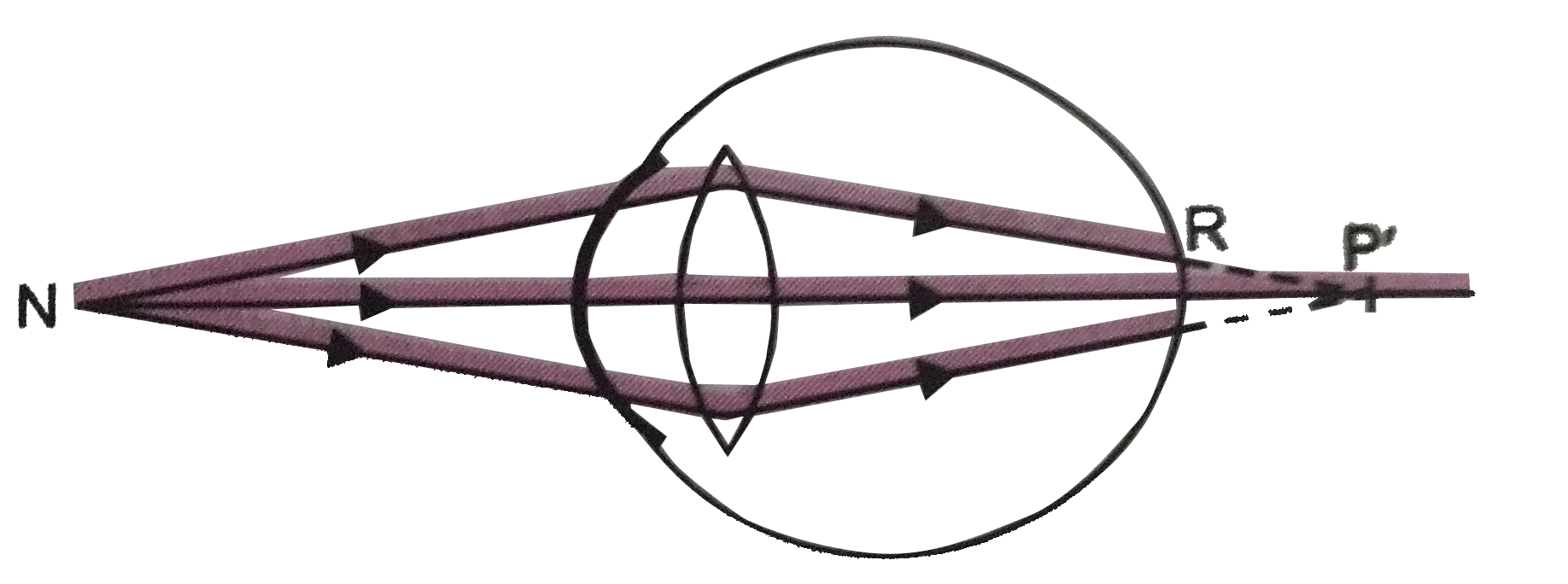Image of an object held at near point N is formed at the back of retina of an eye, as shown in (Fig. 2.25). What is this defect of vision called ?

This defect of vision is called hypermetropia of long sightedness.

Topper's Solved these Questions
- BOOK - PRADEEPCHAPTER - THE HUMAN EYE AND COLOURFUL WORLDEXERCISE - (Additional)Long answer10videos
THE HUMAN EYE AND COLOURFUL WORLD
- BOOK - PRADEEPCHAPTER - THE HUMAN EYE AND COLOURFUL WORLDEXERCISE - (Based)Short answer11videos
THE HUMAN EYE AND COLOURFUL WORLD
- BOOK - PRADEEPCHAPTER - THE HUMAN EYE AND COLOURFUL WORLDEXERCISE - (Additional)Very short answer29videos
THE HUMAN EYE AND COLOURFUL WORLD
- BOOK - PRADEEPCHAPTER - SOURCES OF ENERGYEXERCISE - Mock Test20videos
SOURCES OF ENERGY
Similar Questions
Knowledge Check
- Question 1 - Select One
The defect of vision in which the image of nearby object is formed behind the retina is 1
AMyopiaBHypermetropiaCPresbyopiaDShort-sightedness - Question 2 - Select One or More
When we look at some object through our eyes then image formed on the retina is
ARealBVirtualCErectDInverted
A person is able to see objects clearly only when these are lying at distances between 50 cm and 300 cm from his eye.
(a) What kind of defects of vision is he suffering from? (b) What kind of lenses will be required to increase his range of vision from 25 cm to infinity? Explain briefly.View SolutionWhat is the far point and near point of the human eye with normal vision?
View SolutionWhat are the far point and near point of the human eye with normal vision ?
View SolutionWhat are the far point and near point of the human eye with normal vision ?
View SolutionIn an astronomical telescope, focal length of eye piece is 5cm and focal length of objective is 75cm. The final image is formed at the least distance of distinct vision (=25cm) from the eye. What is the magnifying power of the telescope ?
View SolutionA simple microscope has a magnifying power of 3.0 when the image is formed at the near point (25 cm) of a normal eye. (a) What is its focal length? (b) What will be its magnifying power if the image is formed at infinity?
View Solution

